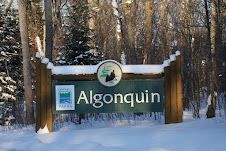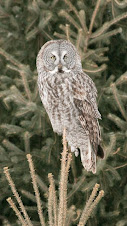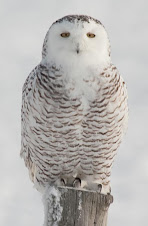Report Date: Saturday October 3, 2009
Report Details: Algonquin Park remains at its fall foliage colour peak. Reds, oranges, and yellows are dominating the landscape making for very impressive viewing. Some observers are commenting that this year's colour is one of the best since official record keeping began in 1972.
Understory areas are showing more colour change as temperatures drop and cool temperatures penetrate the canopy. Typically, the understory changes colour to a less intense colour (orange/yellow) well after the Sugar Maple canopy has peaked.
For late season fall colour watchers, Tamarack (Larch) is beginning to show some hint of the approaching yellow colour change.
In many observers' opinions, Algonquin Park's upcoming overcast and rainy weather enhances fall foliage viewing when compared to sunny days. Thus, a rainy day trip to Algonquin Park can have substantial rewards.
The peak of fall colour in Algonquin Park is relatively short-lived. Despite recent rain and associated high wind, leaf fall continues to remains low.
Substantial rainfall amounts during summer and temperatures dropping to near freezing in late August/early September have resulted in brilliant colours. In combination with other factors, such as shortening daylight length, trees have been rapidly breaking down chlorophyll (the green food manufacturing pigment in leaves) revealing Algonquin's outstanding fall colour.
For the past 35 years, the average peak of Sugar and Red Maples in Algonquin Park has been September 27 (with a range from September 15 [1982] to October 9 [1996]. This variation in the peak is a result of numerous environmental conditions such as temperature, frost, precipitation, winds, etc., thus the exact timing of peak colour can not be precisely determined until it happens.
Traditionally, higher elevation areas of Algonquin Park, such as the western portion of the Highway 60 Corridor and the western half of the backcountry change colour earlier than the eastern half, as a result of the east's lower elevation. This year, wide-spread frost has encouraged fall foliage change throughout the Highway 60 area including: West Gate (km 0.0); Lake of Two Rivers Picnic Ground and Beach (km 33.8); and Brewer Lake (km 48.6).
Plan now for your Algonquin Park fall foliage trip any time from now to mid-October to see Algonquin's brightest season.
This fall foliage colour report will be updated as the season progresses. Check back for updates.
Percentage of Colour Change: 90%-100%
Percentage of Leaf Fall: 20%-29%
Good places for viewing: West Gate (km 0.0)
Algonquin Art Centre (km 20.0)
Two Rivers Picnic Ground and Beach (km 33.8)
Visitor Centre Viewing Deck (km 43.0)
Brewer Lake (km 48.6)
Algonquin's Backcountry (Interior)
Side Roads with Great Foliage Viewing Opportunities: Arowhon Road (north from km 15.4)
Source Lake Road (north from km 20.0)
Centennial Ridges Road (south from km 37.6)
Rock Lake Road (south from km 40.3)
Opeongo Road (north from km 46.3). This road is best for late season foliage viewing.
Recommended Trails: Hardwood Lookout Trail (Km 13.8)
Track and Tower Trail (Km 25.0)
Centennial Ridges Trail (south from Km 37.6)
Booth's Rock Trail (south from Km 40.3)
Lookout Trail (Km 39.7)
WWW.ALGONQUINIIN.COM
E-MAIL STAY@ALGONQUININN.COM
Subscribe to:
Post Comments (Atom)






No comments:
Post a Comment
We hope that you enjoy our blogs and comments are appreciated.